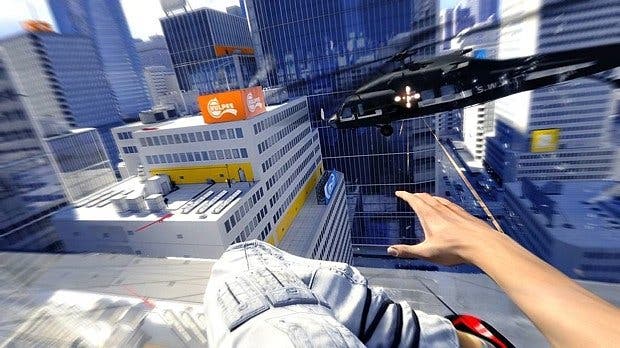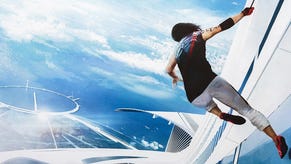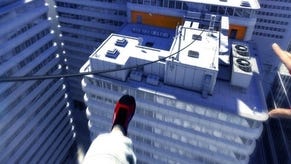Retrospective: Mirror's Edge
Fun run.
The only combat training involves learning a few basic melee strikes and effective defensive disarms; otherwise it's about working out how to slide and jump over obstacles, and perform tricky wall runs, safety rolls, 180-degree jumps and the like.
From the get-go, Mirror's Edge tells the player how to best use (and maintain) a constant speed, moving through the environment as quickly and fluidly as possible with the least amount of resistance.
And like stubborn mules, most of us willfully didn't get it at first. Distilled down, the point of the training level is really an exercise in breaking established design paradigms, when all we wanted to do subconsciously was play the damn game like a first-person shooter. (You can't at this point-there aren't even any guards in this level.)
Although Mirror's Edge does a great job of initially hitting you over the head with what you should be paying attention to, chances are all that immediately goes out the window once you start in with the game proper.
Mirror's Edge has what most would call a high learning curve, only instead of the difficulty ramping up right off the bat, you need to have a certain degree of finesse to even to make it through the first level.

Like most people, I was intrigued by the idea of a first-person game based around platforming, but still found the game challenging when I actually began playing it. I missed jumps. I had no momentum. I spent a lot of time looking at the scenery, wondering what I should be doing to get past whatever part I was stuck on.
The first few times I encountered Blues, I instinctively tried the disarms only to find the weapons felt extremely sluggish, adding what felt in the game like 50 lbs. of dead weight to Faith's fleet-of-foot presence. I lost count of how many times I sent Faith plummeting to her untimely and aurally sickening death, half out of miscalculated judgment, half mistaken trial-and-error.
The insane number of times you die when starting out is the threshold which most people who give up on Mirror's Edge reach but do not surpass. If my personal list of mistakes wasn't enough proof, there's a definite procedure to the game, even though it feels frustratingly stop-and-go when you first go at it.

Although it may not seem like it, the very concept seems to trigger some subconscious response in most players that goes against the grain of almost everything we've all learned about video game conventions over the years. Without a practical basis of comparison, DICE's design has the effect of a creating a psychological stumbling block that's hard enough to negotiate, let alone master.
Undeterred, I pressed on. I continued to die (not a small amount), and levels became progressively more difficult to solve. Even Runner's vision, the slick visual cue that paints nearby Parkour-able objects a rich, glossy red, only gave me a vague idea of which way to go. There were times I wanted to quit, thinking this brilliant idea was perhaps nothing more than a failed experiment.
What I didn't realise then is that what I was experiencing was normal - a necessary part of the Mirror's Edge process, if you will. Obviously there are innumerable games that require players to figure out the flow of the gameplay before they can ever hope to be truly successful.
Mirror's Edge takes that idea and runs with it. Aside from death itself, the most obvious case of this is Runner's vision: DICE doles this out sparingly, showing you where you may springboard to gain speed, or what pipes you can climb up. It's a trail of design breadcrumbs for you to follow, and there are still several instances where it's not going to immediately feel like enough.















